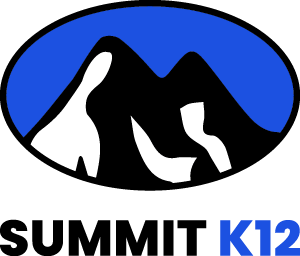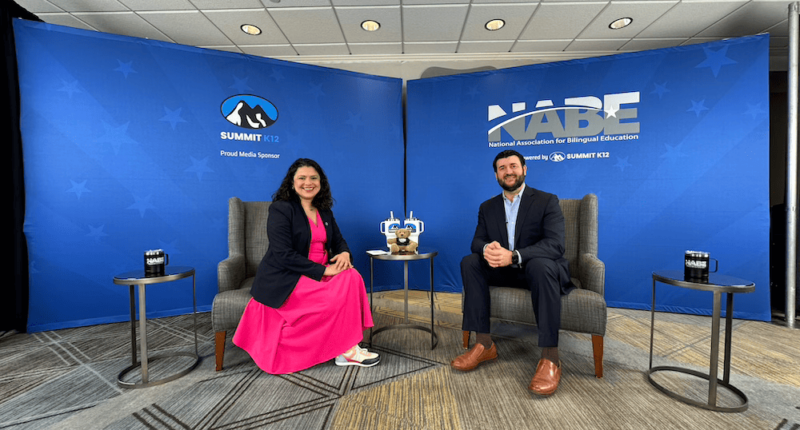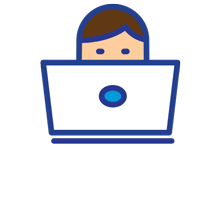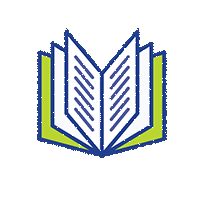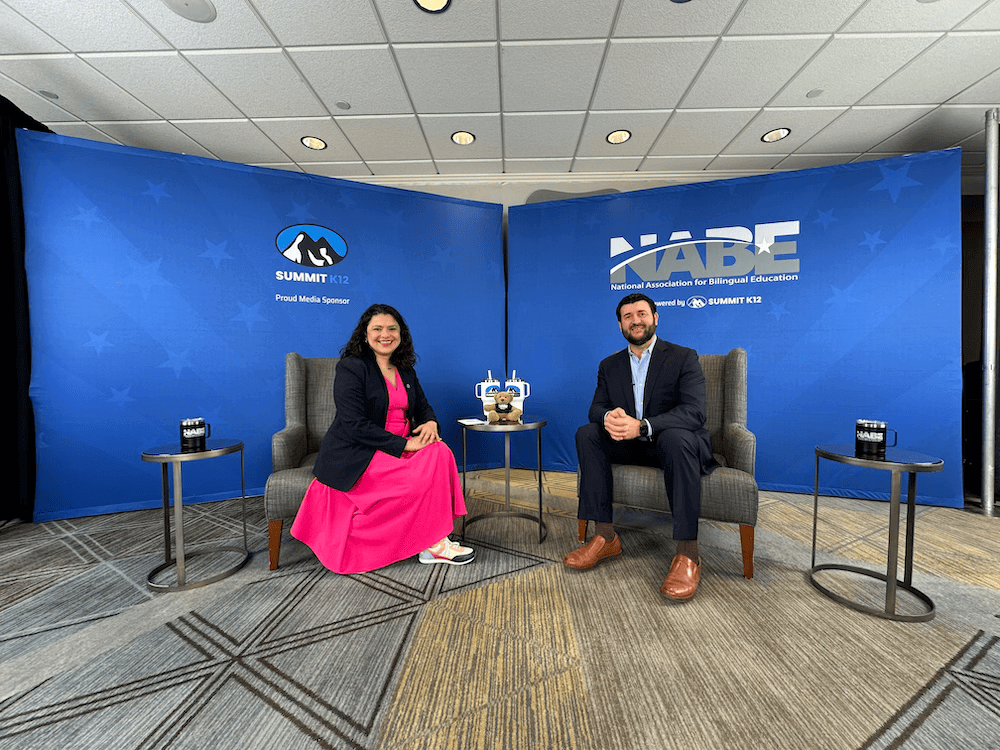
What is second language acquisition and how can we best support our multilingual students?
When I was in middle school, I remember registering for my first Spanish 101 class. As a native English speaker, I was excited about learning a new language. My community had a significant mix of English and Spanish speakers, and I wanted to learn to speak and understand Spanish – while immersing myself in different cultures around me. I was fascinated to see how multilingual speakers could jump back and forth from one language to another without a blip in communication.
So began my journey toward learning a new language. I spent the rest of my years in education working on learning Spanish, from middle school to honors-level college-level courses. Knowing a second language has expanded my capacity for critical thinking, increased my career opportunities, and enhanced many travel experiences.
Although technological advances have enabled us to enhance and transcribe language, we still need to implement various strategies to ensure English learners have the best experience and the most sound outcomes in language acquisition.
As teachers, we must never forget that learning a new language requires time, patience, practice, and significant effort. Also, holding onto a second language requires ongoing use and practice throughout one’s life.
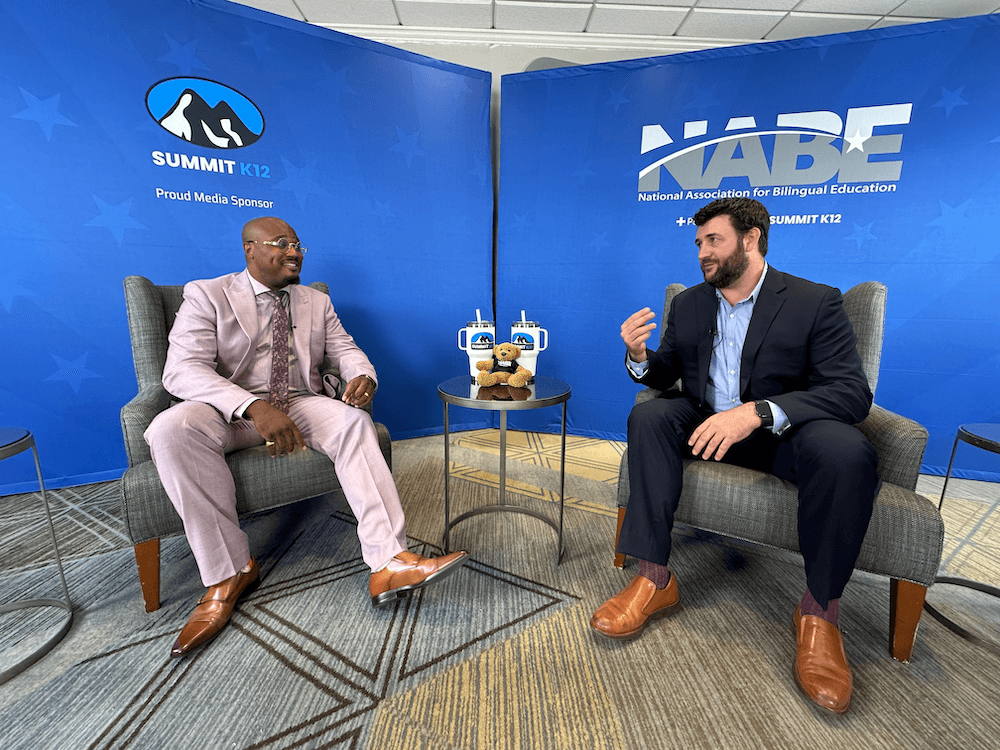
The variables mentioned above play a significant role in learning outcomes for all students. Other factors influencing robust language acquisition are students’ cultural and academic backgrounds, including the learning environment, the teacher, and the type of English language learning program you students are enrolled in at school. These factors play considerable roles in achieving the most vital possible outcomes.
For this article, we’ll focus on the basic theories of Second Language Learning acquisition, highlighting the contributions and processes created by Steve Krashen and Jim Cummins. We’ll also look at some interesting activities you can use with your multilingual learners.
What is Second Language Acquisition?
Second Language Acquisition (SLA—sometimes we refer to it as L2 acquisition) is the process through which people learn a second language. SLA is not just the act of learning but also a field of scientific study that examines and reflects on this process.
SLA involves various stages and factors that influence how a person learns a new language after their first language is established.
Learning Concepts about Second Language Acquisition
Interlanguage
Interlanguage is a concept in SLA that demonstrates the unique and systematic language system learners use. Second language learners are influenced by their native language while learning English simultaneously.
Input Hypothesis
Developed by linguist Stephen Krashen, this theory states that comprehensible input is essential for language acquisition. It distinguishes between subconscious acquisition and conscious learning of language.
Acquisition-Learning Hypothesis
This refers to the difference between acquiring a language naturally and subconsciously learning it through conscious study and instruction.
SLA is a complex process that can be affected by the learner’s age, environment, exposure to the language, and other cognitive factors. It’s a fascinating area of study that bridges linguistics, psychology, and education.
Multilingual Teaching: Theory and Application
There are various steps and strategies to consider when teaching in a multilingual classroom.
English has many metaphors, dialects, slang terms, unique spelling, and grammar exceptions, so it is critical to remember that it is not easy to grasp. Learning English requires ongoing rigorous work, time, dedication, and practice for students to succeed in all four learning domains: reading, writing, speaking, and listening.
Stephen Krashen and the Six Stages of Second-Language Acquisition
Perhaps no one has examined language acquisition more closely than Stephen Krashen. Krashen introduced some of the most influential concepts to the study of language in grasping second-language acquisition.
According to his site, Krashen is an expert in linguistics, specializing in language acquisition and development theories. Much of his recent research has involved the study of non-English and bilingual language acquisition.
Since 1980, Krashen has published over 100 books and articles and has been invited to deliver over 300 lectures at universities throughout the United States and Canada.
Second Language Acquisition
Krashen hypothesizes that second language acquisition is very similar to the process children use when acquiring their first language. He states, “Learning a second language requires meaningful interaction in the new language—natural communication—in which speakers are concerned with the messages they are conveying and understanding, not with the grammatical form of the language.”
Krashen also believes all learners undergo six stages before acquiring a new language.
What are the six stages of Second Language Acquisition according to Krashen?
The Six Stages of Second Language Acquisition (SLA) refers to how individuals learn a new language after acquiring their first language.
Preproduction Stage (Silent Period)
In this initial stage, learners are primarily silent and have limited comprehension of the new language. They may exhibit receptive skills by listening, but they have yet to speak aloud. At this stage, students communicate best with visual images, gestures, drawings, or other nonverbal means.
Early Production Stage
Learners will produce some words and phrases in the new language during this stage. Also, remember that vocabulary is still quite limited; therefore, sentence structures should be as simple as possible.
English Learners can typically respond to simple questions and engage in basic conversations using memorized chunks of language.
Speech Emergence Stage
During this stage, learners start communicating more fluently in the second language. They also begin to construct complex sentences and have a broader range of vocabulary. Communication and engagement with peers start to become more meaningful.
Intermediate Fluency Stage
In this stage, English learners begin to express ideas and opinions with greater accuracy. Also, students begin to express ideas and share views with more confidence.
Advanced Fluency Stage
Learners at this stage exhibit near-native proficiency in the second language. They can understand and produce English across various topics and contexts. Language use is more relaxed, and learners can make significant strides in handling academic vocabulary, reading with complete comprehension, and speaking.
Near-Native Proficiency Stage
The final stage of English Language Acquisition is similar to that of a native English speaker. At this stage, English learners have a strong command of the language, understand nuances, gestures, and expressions, and can now best relate to their new culture.
It’s important to note that these stages are generalizations and that individual learners may progress through them at different rates, in other ways, and at various times. Factors such as motivation, exposure to the language, opportunities for practice, and individual learning styles can all influence the speed and success of second language acquisition.
BICS and CALP: Determining Social Language vs. Academic Language
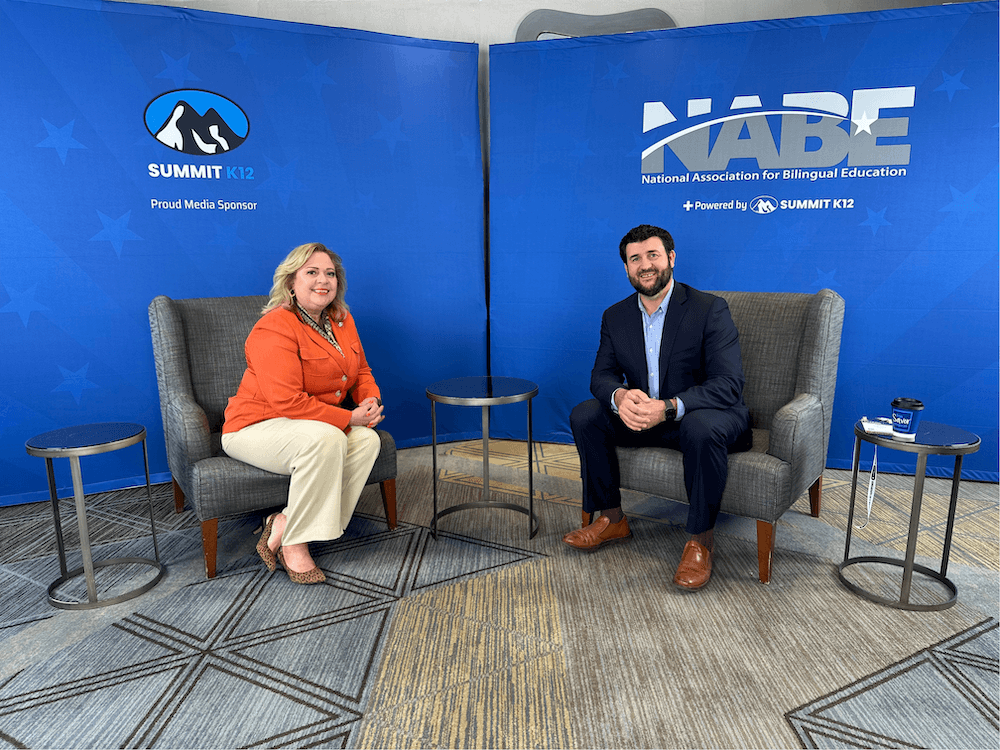
In 1984, Jim Cummins invented the phrases BICS and CALP. How did Cummins arrive at this new theory? Cummins noticed his students were speaking English well in social settings. However, they scored low on written language tests.
Cummins discovered a significant difference between using social language amongst peers – speaking out loud in social settings came faster while moving toward the use of academic language took much longer.
He also identified two significant aspects of language acquisition. He found a crucial difference between ‘essential communication in English among peers within their social circles vs. English for academic purposes. With this knowledge, he discovered where the large learning gap originated. Cummins came up with the phrases BICS and CALP.
What is the difference between BICS and CALP?
BICS – Social Interaction Language
What does BICS stand for?
BICS is an acronym for Basic Interpersonal Communication Skills (BICS). The term refers to the linguistic skills we need in everyday, face-to-face social interactions. For example, the language children use at the playground, the phrases they toss passing in the hallway, or simply learning how to greet one another in a new culture – these are all examples that demonstrate how we communicate on a social level.
The language we use in these social interactions is context-embedded, meaningful, cognitively undemanding, and non-specialized.
How long does it take for a second language learner to develop BICS?
It can take the learner six months to two years to develop BICS, depending on their education level and how much they know of their native language. The language we use in social situations – whether in our native or second language must be meaningful, cognitively undemanding, and non-specialized.
CALP – Academic Language
What does CALP stand for?
CALP is an acronym for Cognitive Academic Language Proficiency and it refers to proficiency in academic language or language used in the classroom in various content areas.
Academic language can be abstract, context-reduced, and specialized. In addition to acquiring the language, learners must develop skills such as comparing, classifying, synthesizing, evaluating, and inferring when developing academic competence.
How long does it take for second language learners to develop CALP?
It takes learners at least five years to develop CALP. Research from Collier and Thomas (1995) has shown that it can take children with no prior instruction or no support in native language development at least seven years to develop CALP.
Second Language Learning Ideas and Activities
It’s important to remember that the needs of those who have to learn English as a second language are unique and warrant a specialized approach to their learning. In this section, we’ll discuss five ideas and tips to increase the learning outcomes for your multilingual students.
Create Personalized Dictionaries
From her Substack, Helping Multilingual Learners Thrive, in an article entitled “Personalized Dictionaries in the Content Areas,” Marilee Coles-Ritchie, Ph.D., shares a valuable tool – have your students create a personalized dictionary.
What is a personalized dictionary, and why use this tool?
According to Ritchie, a student-generated dictionary is a type of book multilingual learners create based on new words with personal meaning.
She states, “It’s important to recognize that some language learners may rely heavily on dictionaries and Google translate. They might spend a lot of time reading and referring to the definitions, even worrying about finding the best definition or one that makes sense in the context they are reading.
However, it’s crucial to encourage students to see dictionaries as just a starting point. Teachers should encourage them to use dictionaries as a quick reference for understanding a word while reading or listening but emphasize that true understanding comes from encountering words multiple times in different contexts.”
Students can use a notebook with alphabet tabs, or they can create a dictionary on a computer.
I recommend having your students hand-write their personalized dictionaries to increase their speaking, reading, writing, and memorization skills. They can also carry their notebooks and access them rapidly in different contexts and settings. A personalized dictionary is also a crucial tool for social and academic learning— one they can use at school and home. Finally, it is an excellent resource for families because students can teach their parents new English words while increasing at-home communication. In return, students can continuously practice, grow, and learn in all four critical language learning domains.
Use Items of Cultural or Personal Relevance
Something that many native speakers of a language take for granted are the very personal and emotional connotations that their language carries for them. For example, think about a time when you heard an old song that brought you back to a special childhood memory. That specific song had meaning to you and could take you back to that exact time and place in the past. Sounds or phrases are significant because they trigger emotions or have personal meaning, which can lead to better memory skills.
A student new to English may have these associations in their native tongue but not in a second language for quite some time. As a teacher, you can help your students make associations by introducing items relevant to them. You can use visuals, stories, and holidays from your students’ cultural backgrounds.
Use the Total Physical Response Method
Whether we know it or not, we send many messages with our body language. For example, consider how you interact with a small child learning to speak. You’ll often make large gestures, exaggerate your expressions, or even act out different ways you are trying to communicate. The total physical response method is helpful because you can see body language, tone, and emotions – even when you don’t speak the same language. Even if your students don’t understand any words, to start – they can follow your body language and make connections that way.
Use Visuals
Similar to the TPR method, visual media often includes much information that words alone cannot convey. Visual cues, such as settings, scenarios, gestures, and postures, are all sound for Second language learners, as they can infer much information about the language from the context.
This technique contrasts a strictly formal or grammatical setting, where students may memorize specific rules but need help understanding the greater context in which they use those words. It is best to avoid this strategy.
Immersion
Often, the best way to grasp a language is to become immersed in it. Immersion can be encouraged in classroom settings by getting students to communicate with each other in direct ways. For example, you can use teacher feedback through storytelling. Schools often use dual-language programs that help English Language Learners learn English while native English speakers learn Spanish (or another language in that demographic). Working together, they can learn a significant amount of new language—which benefits everyone.
Avoid Long Explanations
It can be tempting to lay out a concept of English when students need help understanding the material they need to learn. While making explanations is necessary at times, it can hinder the student when it becomes a replacement for experiential and intuitive learning on their part. Instead, you can guide your multilingual learners, provide hints, or have them work with another student to discover an answer. Long explanations can be scary and intimidating due to a lack of understanding – primarily when your students work at the lower levels of English acquisition.
Therefore, long talks can hold back student growth. By using the other methods mentioned above, you can provide a more powerful and meaningful experience with English, which will help with memory and recall skills.
What other activities would you add to this list?
Sources:
- Coles-Ritchie, Marilee. Marilee Coles-Ritchie. Helping Multilingual Learners Thrive, “Personalized Dictionaries in the Content Areas.” 2024.
- Shulman, Robyn. EdNews Daily, “Understanding The Difference Between BICS And CALP In English Language Acquisition.” 2019.
